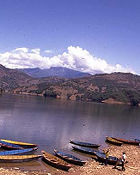Water, sanitation and hygiene have important impacts on both health and disease.
Water-related diseases kill a child every 8 seconds, and are responsible for 80% of all illnesses and deaths in the developing world.

Water-related diseases kill more than 5 million people every year, more than ten times the number killed in wars.
Arsenicosis is caused by long-term exposure to low concentrations of arsenic in drinking-water. It causes painful skin keratosis (hardened lesions) and can result in cancers of the skin, lungs, bladder and kidney. Millions of people are potentially in danger from arsenic poisoning since the water supplies they rely on are contaminated with arsenic (mainly from natural sources) and they either do not have a safe alternative for water supply or are unaware of the risks.
Read more




